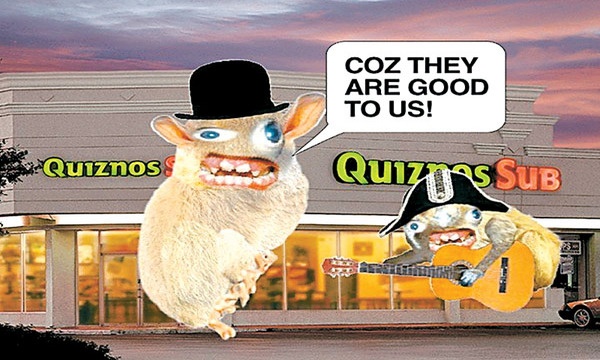August 19, 2016 at 9:48 AM
Using Incongruity in Direct Mail to Maximize Response

Take a moment to think about which TV ads you remember most from years past. Chances are the ads you remember most are either the funniest or out of the ordinary. Two of my favorite ads both debuted during Super Bowls. One is the Betty White Snickers commercial created by BBDO North America from 2010, You’re Not Yourself When You’re Hungry. Betty White is playing a rough game of football and turns into a young man after eating a Snickers bar. The other is Cat Herders, made by Fallon in 2000 for Electronic Data Systems (EDS). In this one grizzled cowboys herd thousands of cats like cattle. My all-time favorite is the Quiznos commercial from 2004 which featured two rodent-like creatures, dubbed spongemonkeys, singing about loving Quiznos subs. One is wearing an old fashioned bowler hat and the other is wearing a seafaring hat and playing guitar. The ad created by the Martin Agency in Richmond generated a huge amount of buzz. People were divided, either loving or hating the ad. Quiznos saw a 400% increase in unique visits to its website in the month the ad aired on TV and the campaign is considered one of the first to go viral.

These advertisements effectively used incongruity to capture attention and create impact.
Incongruity Theory states that humor is derived from the perception that something is out of place, incompatible, or inconsistent with our expectations and mental patterns. The theory has its origins with such historical figures as Kierkegaard and Kant, and some say dates all the way back to Aristotle. Incongruity Theory is more popular than competing theories. Relief theory maintains our fears and tension are eased by laughter. Superiority theory posits we laugh at the misfortunes of others because it makes us feel superior to them. Read more about Incongruity Theory and the Philosophy of Humor by clicking HERE.

So how does incongruity theory apply to direct mail? There is strong evidence that humor used in direct mail enhances favorability of the source and attitude toward the brand. Stewart and Furse (1986) Humor can entertain and persuade, create positive impact, improve brand awareness and loyalty. Humor attracts attention and is memorable. 
Here are some tips to remember when working on a direct mail campaign utilizing incongruity humor:
- TEST. With digital variable printing it is convenient and affordable to test multiple images, messages, personalization and format. As long as the call to action includes an offer code it is easy to track responses by version. Digital printing enables marketers to print and mail small quantities without breaking the budget. David Ogilvy said, “Never stop testing, and your advertising will never stop improving.”
- Know your audience. Use content familiar to the core demographic your campaign is designed to influence. The Volkswagen ad, The Force, created by the Deutsch agency features a young boy dressed as Darth Vader from the Star Wars movies attempting to use the force to start a washing machine and wake a dog and doll without success. He’s startled when he’s able to start the car, but in reality his father started the car remotely. The ad appealed to a broad demographic because the Star Wars movies and Darth Vader are cultural icons.
- As a general rule, it’s okay to poke fun at your competitors. It’s okay to poke fun at yourself. If you poke fun at your customers you risk backlash.
- Avoid tasteless and offensive humor. We live in a politically correct world. It is important to avoid any content which could be found by some to be offensive. That segment of your audience you offended will likely share their feelings on social media and create bad publicity. P.T. Barnum famously said no publicity is bad publicity. The truth is the opposite. Bad publicity can be catastrophic to your business, damaging your brand equity, losing trust, and decreasing sales.
- Utilize multiple types of humor. Experiment with combinations of satirical, ironic, anecdotal, situational, slapstick, self-deprecating, exaggeration, comparison, sarcasm, puns. Whatever form you choose it is important to be sure the direct mail piece is in keeping with the values of the business.
David Ogilvy used to say good copywriters resist the temptation to entertain. He wrote in his book, Confessions of an Advertising Man (1963), “Be serious. Don’t use humor or fantasy.” In 1982 he conceded that research suggested humor improved the performance of television ads in changing brand preference. Humor can help your direct mail piece get noticed and remembered. When done well it can increase response rates, generate positive impact, and improve brand awareness. If you would like to read more about humor in advertising a great resource is the book Humor in Advertising: A Comprehensive Analysis, by Gulas and Weinberger. If you would like to discuss digital printing and conducting test mailings, or have a direct mail campaign planned and would like a price quotation, one of our account executives would be happy to assist you.
Popular Posts

Memorial Weekend

Landing Pages
Learn Why Omnichannel Marketing is Trending

Direct Mail






